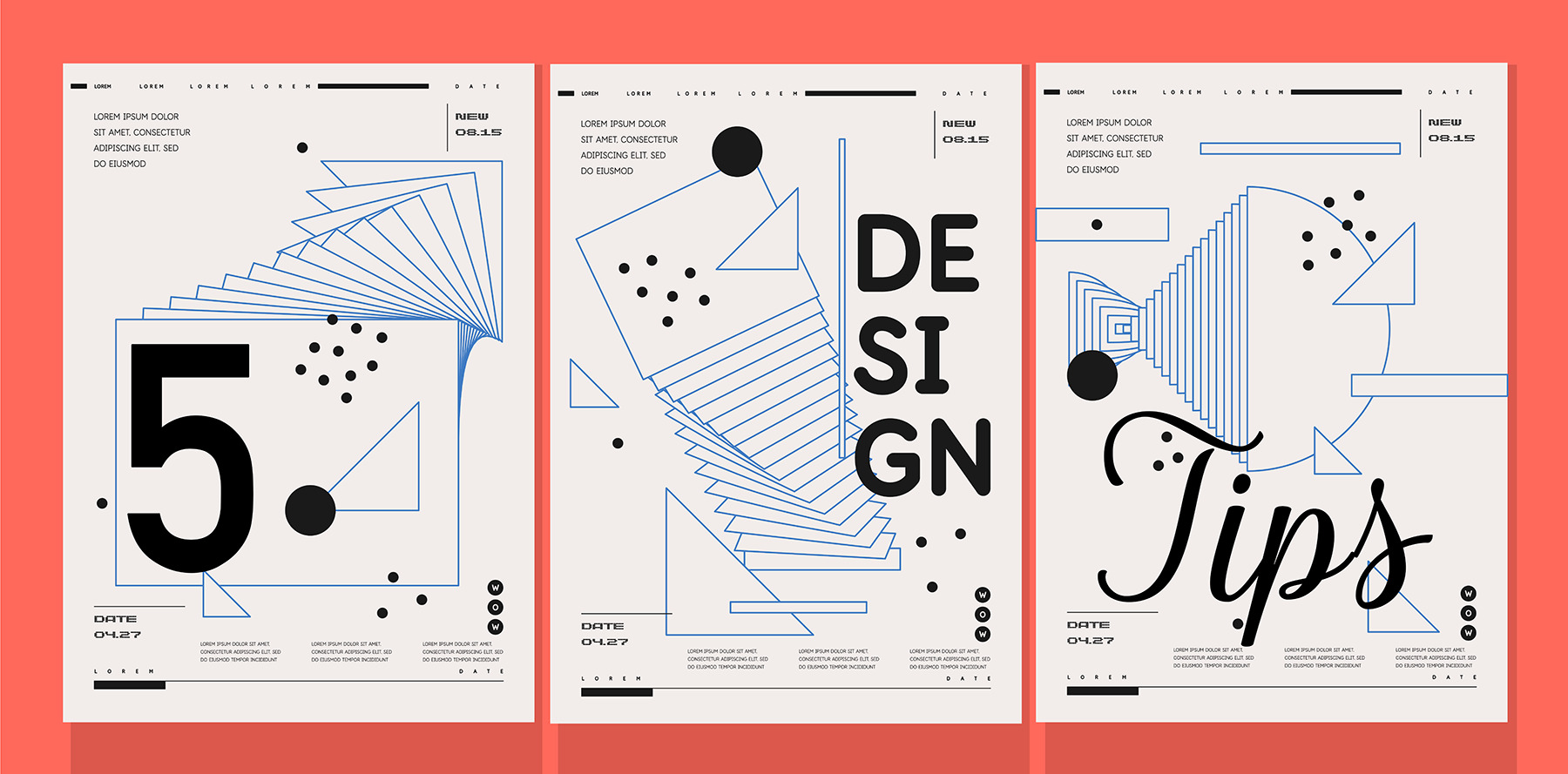
Hierarchy
One of the magical things about graphic design is that you can lead the viewer where you want them to go. You have control over what they read first, next, and last. This superpower is called hierarchy and is a main tenet of graphic design.
Put most simply, hierarchy is making some stuff (usually text) bigger than other stuff, so that people look at things in the order you determine. Colors, icons, and other graphic elements also help to build the hierarchy in your piece.
Hierarchy is especially important for direct mail, where – let’s be frank – people aren’t always spending a lot of time with your mailing. There are certain elements – like your main call to action – that you want to be sure they see, and others that are less important.
When you’re viewing a design be aware of what you naturally look at first, and what you might skip over. Were those the most and least important things on the page? If not, ask your designer to adjust the hierarchy.
Accessibility
The hottest word in the design world right now is accessibility. Making things legible to people with diverse visual abilities, including those with color blindness or vision impairments, or ensuring online documents are accurately read by screen readers are two examples of how to improve accessibility.
While a lot of the conversation today revolves around making websites and digital media accessible, it is just as important that printed pieces are accessible.
There are two main things to consider when making your direct mail pieces accessible: color contrast and font size.
- Putting text on a colored background is always a little risky – especially for our color blind friends! You can use this online tool to easily check which colors you can put text on and still have a high legibility rating.
- As your audience ages, don’t make it hard for them to read your mailings. Set your type in 12pt or higher to keep everyone happy. But remember, all fonts are not created equal. A 10pt in one font might be equal to a 12pt in another. Use your best judgement and always opt for bigger fonts, even if that means cutting copy.
Margins
Clear and consistent margins are my number one item of advice to make your direct mail packages look clean and professional.
I know you often have a lot of important content you’re trying to squeeze in. It’s tempting to put things right up to the edge. But trust me, give yourself a half inch margin on all four sides of the page and your piece will look so much better.
Stay strong and keep it clean! Nothing can go in that half inch. There are only a few exceptions – these things are totally fine to be in the margin:
- Photos that bleed (go all the way to the edge).
- Boxes of color that bleed – but nothing IN the box should go into the margin!
- Minimal “creative license” items – like icons or other graphic elements.
If you feel like you have plenty of room, then increase your margins – go for ¾” or even a full inch. Just make them consistent and line everything up.
QR Codes
I don’t think anyone likes scanning QR codes at restaurants to see the menu. But in direct mail, they are a game changer!
For example, nonprofits can use QR codes to make giving really easy for your donor. Scan the QR code and it takes you directly to a donation page.
QR codes are trackable. You can either use a paid QR code service to track each scan of your code, or create each QR code with a custom URL. You can track the visits to the custom URL just as you would any other webpage.
A QR code asking for a donation can go on every piece of your direct mail package. Why not add one to your return envelope? Maybe the donor will scan it rather than mailing it in – realizing that it’s more convenient – and you’ll get the donation sooner.
QR codes aren’t just for donation pages. Rather than making a really text heavy insert, keep it simple and include a QR code linking to a website with the full story.
QR codes are easy to make. You can make simple ones for free at websites like this. If you want something fancier, with your logo included, or tracking abilities, you’ll need a paid account.
Less is More
Simplicity in design is key to not overwhelming your audience.
Long blocks of copy in direct mail overwhelm and dissuade the reader. Keep your content succinct and impactful. Shorter paragraphs are easier to scan, and bullet points are always a winner!
For longer direct mail pieces, like a four-page letter, make sure your most important message (the ask!) is located where people are certain to see it: the first and last paragraph of the first page, and the very end of the letter – the P.S.
DMAW Guest Blogger:

Libby Ventura is the founder of Ventura Graphic Design, specializing in graphic communications for nonprofits.
Ventura Graphic Design’s mission is to make your mission shine through engaging reports, actionable one-pagers, presentation decks that tell a compelling story – and, of course, direct mail packages that rake in the responses.
Libby lives in Colorado and enjoys growing tomatoes at high-altitude, cooking the most recent Smitten Kitchen recipe, and trying to make enough pottery to replace every dish in her kitchen. Connect with her on LinkedIn!
